 Dec-Feb Temp Anomalies Dec-Feb Temp Anomalies One of the winters that is an analog for the Weatherbell forecast is the winter of 2009-2010. Since you probably don't remember many of the details, I've brought many of them together here for you to read. My next post will be another analog, 2002-2003. The average temperatures for the December 2009 - February 2010 period were among some of the coldest ever across north and central Georgia. Each of the four climate sites - Atlanta Hartsfield-Jackson International Airport, Athens Ben Epps Airport, Columbus Metropolitan Airport, and Macon/Middle Georgia Regional Airport - saw average temperatures among the ten coldest ever recorded. The average temperatures for Columbus had the 4th coldest average temperature for the winter season, while Macon tied for the 5th coldest, Atlanta was the eighth coldest and Athens tied for the ninth coldest winter season. I broke out the anomalies for each month for that winter, and this is what those looked like. The total snowfall this season at Atlanta breaks top 5 for total snowfall recorded December through March for the period of record. As of midnight Wednesday March 3, the total snowfall for the winter season was 5.3 inches which is now the fifth highest since accurate snow records began in 1929. Additionally... the snow on March 2nd marks the third time measurable snow and the tenth time at least a trace of snow or sleet fell at Atlanta Hartsfield-Jackson International Airport this season. In an average winter season Atlanta typically experiences 4 days of measurable snow and 6 days with a trace or more of snow or sleet A few of my own pictures...These two images were taken on February 11th and 12th, 2010 and on the 12th, there was snow on the ground in all 50 US states. The National Weather Service has a few of the events documented on their website, and here are three events they have listed, but there were more. Click on any image to enlarge it. January 7th, 2010 - Snow On Thursday, January 7th, a cold front pushed across north and central Georgia, with the combination and timing of cold air and moisture bringing wintry precipitation across the area. Light snow began during the late morning hours. Snow fell across the area through the day and into the early hours of Friday January 8th. The reinforcing cold air behind the front remained across much of the area through the weekend. North and much of central Georgia's temperatures stayed at or below freezing through Sunday. The map to the left shows the snowfall amounts across north and central Georgia. March 2, 2010 Snow An upper level disturbance traversing the western portion of the United States February 28 and March 1, 2010 helped to develop a surface low along the Texas coast on March 1. This surface low pressure system tracked along the Gulf coast and advected moisture ahead of the system into Georgia from both the Gulf of Mexico and the Atlantic Ocean. By Tuesday, March 2, the surface low moved across southern Georgia and the Florida panhandle and by that afternoon, had moved into the Atlantic Ocean along the Carolina coast. This system brought both rain and snow to the state. Precipitation started as rain and began moving into western Georgia just before midnight on March 2. During the morning hours on March 2 the precipitation continued moving across the state and changed to snow across north Georgia. The snow proceeded to change back to rain during the afternoon and ended across eastern Georgia late in the evening. Snowfall amounts averaged from 2 to 4 inches across north Georgia. However, higher values were reported across northeast Georgia with reports of 9.0 inches in Union county. February 12th, 2010 Snow On Friday, February 12th, precipitation associated with a surface low tracking across the Gulf of Mexico and an upper level short wave tracked across much of north and central Georgia. Light snow began over portions of west Georgia around noontime, then spread eastward through the afternoon before tapering off to flurries by mid evening and dissipating by early Saturday morning. Snow and slush on the roadways froze overnight leading to hazardous driving conditions late Friday night into Saturday morning. The map to the left shows the snowfall amounts across north and central Georgia. National Climatic Data Center - Click here for full review of the Winter of 2009-2010The purpose of this special report is to provide documentation, data analysis, and a preliminary understanding of large-scale climate patterns and their effects on regional weather events. In climatological terms, the Cold Season lasts from October through March. The 2009/2010 Cold Season for North America was historically active and powerful. Extreme fluctuations in temperature and precipitation in the mid-latitudes during this period can be attributed to a wide variety of rapidly progressing weather systems. The persistent systems were influenced by larger scale patterns. The strong warm phase of the El Niño–Southern Oscillation (ENSO) helped to alleviate moderate to exceptional drought across the contiguous United States. Meanwhile, the record-setting negative phase of the Arctic Oscillation produced record cold temperatures in the Deep South. During the October–March period, the contiguous U.S. experienced its eighth wettest such period, while the average temperature was below average (36th coolest). The anomalously cold air, coupled with copious amounts of moisture produced historical snowfall amounts that bested monthly and seasonal records across the country. While the overall drought footprint was at its lowest in the last decade, the moisture surplus caused flooding in the Upper Midwest and New England. High amplitude flow patterns helped the cold arctic air remain entrenched for days and weeks, devastating mild climate crops. The extreme winter of 1977/1978 was similar, as a moderate warm phase of ENSO coincided with a strong negative phase of the Arctic Oscillation. The effects of large-scale climate patterns are often influential on regional weather events and when they are extreme and historic in nature, their local effects are profound and far reaching.
The snow cover extent for the contiguous U.S. during the 2009/2010 Cold Season was above average for the season as a whole, but there was significant variation from month to month. The snowy season got off to an early start with several storms impacting the U.S. during October. These storms helped produce the largest average snow extent during any October for the contiguous U.S. in the 42 year satellite record, according to Rutger's University Global Snow Lab. Conversely, November was very quiet with much below average snow cover. The following three months were cold and snowy with the extent being much above average for December (all time snowiest), January (6th snowiest), and February (3rd snowiest). During January, snow and freezing temperatures were reported as far south as central Florida.
0 Comments
I wanted to save the records that the Atlanta National Weather Service generated a few days ago, so here they are. Again, all data from the NWS except the images toward the end of the post, and those are all from WeatherBELL. The original NWS page can be found by clicking here. Temperature Stats (°F) for June through August...You can click on the name of the four major climate sites to see a graph of the temperatures compared to the average.
Temperature Extremes (°F) for June through August...
Precipitation Rankings for June through August...You can click on the name of the four major climate sites and to view a graph of the precipitation values compared to the average.
Precipitation Extremes for June through August...
Precipitation Analysis Maps for the last 90 days...Temp Anomaly Maps...These maps are from Dr. Ryan Maue and WeatherBELL. Click an image for a larger view.
This storm has to be one of the best winter storms in recent memory for north Georgia, and especially for the metro area.
Preface Morning of the 10th Morning of the 10th
An upper level disturbance tracked across the northern Gulf of Mexico, drawing abundant moisture into the Southeastern U.S. Prior to the arrival of the moisture, a large, cool area of high pressure was entrenched over the southern United States. This helped set the stage for one of the more significant winter weather events in years. Warm, moist air transported north by the low pressure system overrode the cool, dry air at the surface Sunday night.
As mid-level rain and snow fell into the cold surface air, it evaporated and caused the surface temperatures to cool even further. By late Sunday evening, the precipitation reached the surface, appearing as a mix of rain, sleet and snow across central Georgia, with accumulations of up to two inches. In north Georgia, where the cold air was deeper, precipitation fell in the form of mostly snow with some sleet. Between 10 p.m. and midnight on Sunday, an area of intense snow developed along and just north of the I-20 corridor, contributing to a narrow band of 6”- 8.5” total snowfall amounts in Eastern Georgia. To the north of I-20, the airmass was sufficiently cold and moist to produce widespread snowfall amounts greater than 6”. In the northernmost counties of Georgia, and especially at higher elevations, snowfall amounts of 8” to 10” were common. The heavier snow and sleet accumulations began tapering off by mid-day Monday (January 10), but temperatures hovered at or below freezing throughout the day. Persistent freezing drizzle and light freezing rain across much of central and northern Georgia on Monday helped extend the winter event into the afternoon. Reports of ice accumulations from 0.1” to 0.5” were received on Monday – mainly across central Georgia. More information on the snow, ice and sleet accumulations can be found in the Public Information Statement toward the bottom of this page. Here in Dacula, the precipitation initially began as sleet but only for a few minutes. Heavy snow began falling at 9:35 pm and by midnight we had 5" of accumulation. The snow continued throughout the night and by morning we recorded 7.5" of snow, 0.55" of water equivalent for a 13.6 - 1 snow/liquid ratio. Snow tapered off by early morning and despite the fact the temperatures remained at 25-26 degrees all day long, the precipitation changed over to all freezing rain for the rest of the day on the 10th. Accumulations of ice compacted and locked in the snow into what appeared to be a solid sheet of ice. From 6:45 am Monday until 6:45 am Tuesday, we recorded .33" of additional precipitation that fell as sleet and freezing rain. The additional ice sealed in the snow to the point that metro Atlanta schools were closed for 5 straight days. Here's the view in my backyard on Friday the 14th and Saturday the 15th, 5 and 6 days after the snowfall, and still 4" of snow and ice:
Backyard view after 6 days
7 Day Front Yard View
Weather Prediction Center Storm Summaries
Snow and Ice TotalsSlideshow of Storm ImagesVideos from the Winter StormPublic Information Statement
000
NOUS42 KFFC 110451 AAA PNSFFC GAZ001>009-011>016-019>025-027-030>039-041>062-066>076-078>086- 089>098-102>113-111200- PUBLIC INFORMATION STATEMENT NATIONAL WEATHER SERVICE PEACHTREE CITY GA 1100 PM EST MON JAN 10 2011 THE FOLLOWING ARE UNOFFICIAL OBSERVATIONS TAKEN DURING THE RECENT SNOW/SLEET/ICE STORM. IN GENERAL...PRECIPITATION NORTH OF I-20 WAS NEARLY ALL SNOW...SOUTH OF I-20 TO LA GRANGE...BARNESVILLE...AND WARRENTON...MOSTLY SLEET WITH SOME FREEZING RAIN...AND SOUTH OF THIS LINE TO AMERICUS AND SWAINSBORO...MOSTLY FREEZING RAIN. SIGNIFICANT ACCUMULATIONS OF ICE...1/2 TO 1 INCH...WERE REPORTED FROM SOME CENTRAL GEORGIA COUNTIES. SCATTERED TO NUMEROUS POWER OUTAGES WERE NOTED FROM CRISP...EMANUEL...AND JOHNSON COUNTIES. APPRECIATION IS EXTENDED TO EMERGENCY MANAGERS...COUNTY 911 OPERATORS...COOPERATIVE OBSERVERS...SKYWARN SPOTTERS AND THE MEDIA FOR THESE REPORTS. THIS SUMMARY IS ALSO AVAILABLE ON OUR HOME PAGE AT WEATHER.GOV/ATLANTA. ********************STORM TOTAL SNOWFALL******************** LOCATION STORM TOTAL TIME/DATE COMMENTS SNOWFALL OF /INCHES/ MEASUREMENT ...BALDWIN COUNTY... 1.0 700 PM 1/10 SLEET 0.2 700 PM 1/10 FREEZING RAIN ...BANKS COUNTY... HOMER 6.0 1130 AM 1/10 0.1 700 PM 1/10 FREEZING RAIN ...BARROW COUNTY... WINDER 6.5 843 AM 1/10 0.1 700 PM 1/10 FREEZING RAIN ...BARTOW COUNTY... CARTERSVILLE 6.0 108 PM 1/10 0.25 700 PM 1/10 FREEZING RAIN ...BIBB COUNTY... MACON 0.5 550 AM 1/10 FREEZING RAIN ...BLECKLEY COUNTY... 1.0 700 PM 1/10 SLEET 0.25 700 PM 1/10 FREEZING RAIN ...BUTTS COUNTY... JENKINSBURG 1 NW 0.10 615 AM 1/10 SLEET. 0.50 700 PM 1/10 FREEZING RAIN ...CARROLL COUNTY... CARROLLTON 5.0 SE 4.1 715 AM 1/10 CARROLLTON 4.0 1053 AM 1/10 COOP 0.10 700 PM 1/10 FREEZING RAIN ...CATOOSA COUNTY... RINGGOLD 1 S 7.0 1011 AM 1/10 FORT OGLETHORPE 6.0 1043 AM 1/10 ...CHEROKEE COUNTY... CANTON 1 S 6.0 322 AM 1/10 HICKORY FLAT 4.8 1257 PM 1/10 WALESKA 7.0 1128 AM 1/10 ...CLARKE COUNTY... ATHENS 6.2 1132 AM 1/10 WINTERVILLE 5.0 109 AM 1/10 0.1 700 PM 1/10 FREEZING RAIN ...CLAYTON COUNTY... ATL AIRPORT 4.0 400 PM 1/10 0.1 700 PM 1/10 FREEZING RAIN ...COBB COUNTY... SMYRNA 5.0 911 AM 1/10 KENNESAW 4.8 928 AM 1/10 ...COWETA COUNTY... NEWNAN 2.5 1118 AM 1/10 0.1 700 PM 1/10 FREEZING RAIN ...CRAWFORD COUNTY... ROBERTA 0.75 710 AM 1/10 SLEET. FORT VALLEY 3 NW 0.50 501 AM 1/10 FREEZING RAIN ...CRISP COUNTY... CORDELE 0.5 1053 AM 1/10 FREEZING RAIN ...DADE COUNTY... TRENTON 1 E 7.5 1003 AM 1/10 ...DAWSON COUNTY... DAWSONVILLE 4.8 1101 AM 1/10 ...DEKALB COUNTY... DECATUR 4.0 812 AM 1/10 DUNWOODY 4.5 1230 PM 1/10 DORAVILLE 4.3 923 AM 1/10 STONE MOUNTAIN 4.5 927 AM 1/10 ...DOUGLAS COUNTY... FAIRPLAY 4.5 1051 AM 1/10 ...DOOLY COUNTY... 0.5 700 PM 1/10 FREEZING RAIN ...EMANUEL COUNTY... MIDVILLE 2 S 0.25 700 PM 1/10 FREEZING RAIN ...FANNIN COUNTY... MINERAL BLUFF 9.0 1044 AM 1/10 PUBLIC REPORT EPWORTH 8.0 1039 AM 1/10 ...FAYETTE COUNTY... FAYETTEVILLE 1.0 1126 AM 1/10 WFO FFC 0.25 700 PM 1/10 FREEZING RAIN ...FLOYD COUNTY... ROME 5.0 100 AM 1/10 ...FORSYTH COUNTY... CUMMING 6.0 1100 AM 1/10 ...FULTON COUNTY... ROSWELL 4.5 840 AM 1/10 ATLANTA 3.0 931 AM 1/10 ...GORDON COUNTY... CALHOUN 7 SE 5.0 1126 AM 1/10 FAIRMOUNT 5.0 1241 PM 1/10 ...GWINNETT COUNTY... BUFORD 8.0 930 AM 1/10 ...HALL COUNTY... GAINESVILLE 3.2 1044 AM 1/10 UP TO 5 INCHES TO THE NORTH. ...HARALSON COUNTY... TALLAPOOSA 5.0 117 PM 1/10 ...HARRIS COUNTY... 0.88 700 PM 1/10 SLEET 0.25 700 PM 1/10 FREEZING RAIN ...HEARD COUNTY... 2.0 700 PM 1/10 SLEET 0.25 700 PM 1/10 FREEZING RAIN ...HOUSTON COUNTY... 1.0 700 PM 1/10 SLEET CENTERVILLE 0.5 639 AM 1/10 FREEZING RAIN ...HENRY COUNTY... MCDONOUGH 4.0 1010 AM 1/10 ...JOHNSON COUNTY... 0.5 700 PM 1/10 SLEET 1.0 700 PM 1/10 FREEZING RAIN ...LAURENS COUNTY... DUBLIN 0.5 1121 AM 1/10 SNOW AND SLEET 0.5 700 PM 1/10 FREEZING RAIN ...LUMPKIN COUNTY... DAHLONEGA 6.0 1032 AM 1/10 0.5 700 PM 1/10 SLEET ...JACKSON COUNTY... HOSCHTON 5.0 1115 AM 1/10 ...JOHNSON COUNTY... WRIGHTSVILLE 0.5 615 AM 1/10 FREEZING RAIN ...MACON COUNTY... 0.75 700 PM 1/10 FREEZING RAIN ...MADISON COUNTY... 10.0 700 PM 1/10 ...MARION COUNTY... 0.25 700 PM 1/10 SLEET 0.50 700 PM 1/10 FREEZING RAIN ...MERIWETHER COUNTY... 0.50 700 PM 1/10 FREEZING RAIN 2.00 700 PM 1/10 SLEET/FREEZING RAIN MIX ...MONROE COUNTY... FORSYTH 1.0 724 AM 1/10 0.5 700 PM 1/10 FREEZING RAIN ...MORGAN COUNTY... MADISON 4.0 821 AM 1/10 BOSTWICK 3.5 1103 AM 1/10 0.25 700 PM 1/10 FREEZING RAIN ...MUSCOGEE COUNTY... COLUMBUS T 345 PM 1/10 SLEET ...PAULDING COUNTY... DALLAS 7 NE 5.0 1000 AM 1/10 DALLAS 4 S 6.2 940 AM 1/10 ...PEACH COUNTY... BYRON 2.50 710 AM 1/10 SLEET/FREEZING RAIN MIX 0.25 700 PM 1/10 FREEZING RAIN ...PICKENS COUNTY... JASPER 4 S 6.5 133 PM 1/10 ...PIKE COUNTY... 0.25 700 PM 1/10 FREEZING RAIN ...POLK COUNTY... FISH CREEK 5.5 112 PM 1/10 ...PULASKI COUNTY... 0.5 700 PM 1/10 FREEZING RAIN ...PUTNAM COUNTY... EATONTON 4.0 1115 AM 1/10 ...NEWTON COUNTY... COVINGTON 3.5 730 AM 1/10 ...OCONEE COUNTY... WATKINSVILLE 6.2 1123 AM 1/10 0.25 700 PM 1/10 FREEZING RAIN ...ROCKDALE COUNTY... CONYERS 2.0 917 AM 1/10 ...SCHLEY COUNTY... 0.1 700 PM 1/10 FREEZING RAIN ...SPALDING COUNTY... GRIFFIN 1.0 515 AM 1/10 SLEET ...STEWART COUNTY... 0.25 700 PM 1/10 FREEZING RAIN ...SUMTER COUNTY... 0.50 700 PM 1/10 FREEZING RAIN ...TALBOT COUNTY... 1.00 700 PM 1/10 FREEZING RAIN/SLEET MIX ...TAYLOR COUNTY... 0.50 700 PM 1/10 FREEZING RAIN ...TELFAIR COUNTY... 0.10 700 PM 1/10 FREEZING RAIN ...TOOMBS COUNTY... 0.10 700 PM 1/10 FREEZING RAIN ...TREUTLEN COUNTY... 0.10 700 PM 1/10 FREEZING RAIN ...TROUP COUNTY... HOGANSVILLE 6 W T 559 PM 1/09 SLEET HOGANSVILLE 0.12 438 AM 1/09 FREEZING RAIN ...TWIGGS COUNTY... JEFFERSONVILLE 0.6 1119 AM 1/10 0.1 700 PM 1/10 FREEZING RAIN ...UPSON COUNTY... 1.0 700 PM 1/10 FREEZING RAIN/SLEET MIX ...WALKER COUNTY... CHICKAMAUGA 8.0 1003 AM 1/10 LOOKOUT MOUNTAIN 7.0 345 AM 1/10 ...WALTON COUNTY... BOLD SPRINGS 5.5 530 AM 1/10 ...WASHINGTON COUNTY... SANDERSVILLE 4.0 745 AM 1/10 ...WEBSTER COUNTY... 0.25 700 PM 1/10 FREEZING RAIN ...WHITE COUNTY... CLEVELAND 6.0 800 AM 1/10 ...WHITFIELD COUNTY... DALTON 7.5 1015 AM 1/10 ...WILCOX COUNTY... 0.25 700 PM 1/10 FREEZING RAIN ...WILKINSON COUNTY... IRWINTON 1.0 649 AM 1/10 SLEET 0.25 700 PM 1/10 FREEZING RAIN $$ This is the first of what I hope will be many post on significant weather events in Georgia. Almost all of this information comes from the NWS and NOAA and I take no credit for the documentation, my goal was to compile all of the information from multiple sources, and bring it together in one place. PrefaceA decaying tropical system, previously known as Tropical Storm Alberto, produced torrential rainfall which resulted in some of the worst flooding ever observed across portions of the States of Georgia, Alabama, and Florida during July 1994. The rainfall led to exceptional flooding across central and western Georgia, eastern Alabama, and the Florida Panhandle. Five river basins were particularly hard hit: (1) the Flint River Basin in western Georgia, (2) the Ocmulgee River Basin in central Georgia, (3) the Chattahoochee River Basin along the Georgia-Alabama state line, (4) the Choctawhatchee River Basin in Alabama, and (5) the Apalachicola River Basin in Florida. The flooding claimed 33 lives and caused damages estimated at close to $750 million. ANational Oceanic and Atmospheric Administration (NOAA)disaster survey team assembled for its first meeting in Peachtree City, Georgia, on the morning of July 18, 1994. All aspects of weather and flood warning systems--from data acquisition to user response--were surveyed to determine NOAA's effectiveness and to recommend improvements if deficiencies were found. This report gives the results and findings of the survey team. The survey team consisted of the following individuals:
The team was divided into two groups during parts of the survey so that the wide geographic area of impact could be covered efficiently. One group, composed of Alex, Georgakakos, and May, traveled through Georgia and the eastern portion of the Florida Panhandle. The other group, composed of Haffer, Hooke, and Van Demark, concentrated on Alabama and the western portion of the Florida Panhandle. During the week, the two teams coordinated their progress by meetings and telephone calls. The survey team conducted its field work on Monday, July 18, through Friday, July 22, 1994. The entire survey team met in Atlanta, Georgia, on Saturday, July 23, 1994. The consensus of the survey team was that overall NOAA provided good, high-quality services throughout this event. The report discusses successful features of NOAA's services program, as well as recommendations for areas needing improvement. William H. Hooke Team Leader Summary Tropical Storm Alberto originated in Senegal on June 18, 1994, as a tropical wave. The system became Tropical Depression One on June 30 at approximately 0600 Universal Coordinated Time (UTC). On July 2 at about 0000 UTC, the depression strengthened in the Gulf of Mexico near the Yucatan Peninsula to become Tropical Storm Alberto. When the center made landfall near Destin, Florida, at 1500 UTC on July 3, Alberto was at its peak intensity, 993 millibars and 55-knot winds. Winds then quickly subsided, and Alberto's central pressure rose rapidly. After landfall, the motion of the storm slowed and precipitation increased. The storm moved slowly through Alabama into Georgia, stalling just south of Atlanta. Over the next few days it reversed its course and then looped back on its previous course before ultimately dissipating. During that period it dumped copious amounts of rain across the area. Amounts as high as 21.1 inches in 24 hours were observed at Americus, Georgia. The Weather Surveillance Radar-1988 Doppler (WSR-88D) provided the forecasters with a very good representation of the areal extent of the precipitation although it underestimated precipitation amounts somewhat. This rainfall produced record and near-record flooding along the Flint, Ocmulgee, Chattahoochee, Choctawhatchee, and Apalachicola Rivers )see image). Overall, flash flooding and flooding caused by the rainfall from Alberto took 33 lives, destroyed thousands of homes (including some entire communities), forced approximately 50,000 people to be evacuated, and caused property damage (including lost crops) estimated as high as $750 million. Impact Figure 1-2 Click to enlarge Figure 1-2 Click to enlarge Figure 1-2 shows the counties that were Presidentially declared disaster areas. Most of the declared counties were concentrated along the five rivers (and their tributaries) mentioned in the section above. A total of 78 counties were declared Federal disaster areas, including 55 in Georgia, 10 in Alabama, and 13 in Florida. The flooding took a significant toll on human life, as a total of 33 persons perished. Of that total, 31 deaths occurred in Georgia, while the other 2 occurred in Alabama. Many of the fatalities, as is typical with flood events, occurred as a result of flash flooding; and most occurred in vehicles. In addition, approximately 50,000 people were forced from their homes due to the flooding. More than 18,000 dwellings were damaged or destroyed by the floods, and nearly 12,000 people applied for emergency housing. In Macon, Georgia, the fresh water supply to nearly 160,000 people was disrupted when the water treatment plant, located along the banks of the Ocmulgee River, was flooded. Some residences were without fresh water for as long as 19 days. In addition, thousands of people and pieces of equipment were engaged in various flood-fighting efforts throughout the three-state area impacted by the flooding. Dozens of Federal, state, and local government agencies, private organizations, as well as various volunteer groups, were heavily involved in the massive mobilization of resources. Federal agency participation included, but was not limited to, the Federal Emergency Management Agency (FEMA) , U.S. Army, U.S. Army Corps of Engineers, U.S. Department of Transportation, U.S. Department of Housing and Urban Development, and Small Business Administration. With respect to property damages, the estimates are nearly $750 million across the States of Georgia, Alabama, and Florida as a result of this flood event. In addition to the more than 18,000 dwellings damaged or destroyed, hundreds of bridges and well over 1,000 roads sustained damages. Also, 218 dams (most of them small dams located in Georgia) were damaged by the flooding, many of which failed altogether. Agricultural losses accounted for approximately $100 million. In the States of Georgia, Alabama, and Florida combined, more than 900,000 acres of crops were affected by the flooding. Georgia and Alabama suffered the greatest crop losses with more than 400,000 acres in each state impacted. In all three states, peanuts and cotton were the commodities most severely affected. Livestock losses were also significant, especially to poultry, with as many as 250,000 chickens reportedly lost to the flooding. Storm Genesis
Flooding Summary and Discussion 1-4 Click to enlarge 1-4 Click to enlarge here is little question as to the cause of the torrential rainfall associated with Alberto and its remnants. While heavy precipitation accompanies nearly every tropical system, excessive rainfall was produced by the remnants of Alberto due to two main factors: (1) the slow, forward motion of the system and (2) the meandering, looping (retrogressive) nature of the system's track. These characteristics contributed to rainfall accumulations that, in several places, exceeded 20 inches. Noteworthy was Americus, Georgia, which received a storm total of 27.61 inches (July 3-9), including a 24-hour total of 21.1 inches (July 5-6). While such amounts are certainly not unprecedented, they are nonetheless rare, even with decaying tropical systems. Figure 1-4 shows the National Weather Service (NWS) Climate Analysis Center's storm total isohyetal analysis. The heaviest rains (16 inches or greater) fell in a relatively narrow band across southwestern Georgia and southeastern Alabama. Some of the worst flash and urban flooding occurred in this excessive rainfall area, as evidenced by the 15 fatalities that occurred in the vicinity of Americus, Georgia. In contrast, a far larger area was inundated with 8 or more inches of rainfall. It was this heavy precipitation that fell over a fairly large area that generated tremendous runoff and resulted in the widespread river flooding. Figure 1-5 is a composite figure combining portions of Figures 1-1 through 1-4. This figure shows the inland track of Alberto and its remnants, the area enveloped by the 8-inch rainfall isohyet, the major rivers affected by flooding, and the counties that were Presidentially declared disaster areas. As is typical with flood events of this magnitude, widespread major river flooding evolves from flooding which first manifests itself in the form of urban, small stream, and flash flooding. Such was the case with this flood. The first reports of flooding included flooded roads, underpasses, culverts, and the like. Since the heaviest rains were generally close to the path of the center of Alberto, the pattern of flooding essentially followed the path of the storm center. Thus, flooding first broke out across portions of the Florida Panhandle and southeast Alabama, then across southwestern portions of Georgia. Flooding later broke out across much of the remainder of western and central Georgia. As rainfall persisted and soils became saturated, small streams and rivers began to overflow; and small dams were threatened by the tremendous inflow into the reservoirs behind them. Some small, unregulated earthen dams began to fail, and reports of road and bridge washouts became common. Within a day after landfall, the forward motion of Alberto slowed. The rains continued, and some of the larger rivers began to approach flood stage at various locations. Late on July 5, with the center of Alberto coming to a halt near Atlanta, portions of numerous large rivers exceeded flood stage; and river flooding became more widespread and significant. By the morning of July 6, some locations had observed record flooding; and the first crests began to appear along some of the smaller rivers and at some upstream locations along the larger rivers. Alberto's movement became erratic--the system was now moving westward, looping back over a portion of its previous track. Additional rainfall caused a progression in flooding from urban and small stream flooding to river flooding. By July 7, as Alberto's center drifted into central Alabama, rainfall finally diminished, both in intensity and in areal coverage. Tremendous volumes of water were now moving down major river systems in portions of Georgia, Alabama, and Florida: the Flint, Ocmulgee, Chattahoochee, Choctawhatchee, and the Apalachicola Rivers. River flooding peaked, both in terms of coverage and severity, during the period July 6-15; but flooding would continue along portions of some rivers until close to the end of July. By far, the worst flooding occurred along Georgia's Flint and Ocmulgee Rivers and their tributaries. Some of the hardest hit cities along these rivers include Albany, Macon, and Montezuma. Across the entire three-state area impacted by the flooding, 17 NWS river forecast locations set new record flood stages, some breaking the old record by 5-7 feet. In all, 47 NWS river forecast locations exceeded flood stage. Crests of 5-15 feet above flood stage were common, while portions of some rivers observed crests that exceeded flood stage by more than 20 feet. The NWS offices involved in the flood event across the three-state area issued 657 watches, warnings, and statements related to the event; and the Southeast River Forecast Center (SERFC) issued 238 NWS internal river forecasts. River Flooding Table 2-2 Table 2-2 The area affected by flooding from the rains of Alberto stretched from central Georgia southwest into southeastern Alabama and southward into the Florida Panhandle. The river basins with the most severe flooding included the Ocmulgee and Flint Basins in Georgia, the Chattahoochee Basin along the Georgia-Alabama border, the Choctawhatchee Basin in Alabama, and the Apalachicola Basin in Florida. Appendix B includes the USGS listing of the crest values, previous record crests, and return interval of the crests for this event. Appendix C also includes selected hydrographs. Table 2-2 summarizes the number of locations by basin that equaled or exceeded the 100-year recurrence interval and the number of locations that exceeded the previous record crest. The SERFC issued 238 river forecasts for locations in the impacted area during this event. On July 3, 24-hour operations began and continued through July 9 at 9 p.m. with the brief exception from midnight July 4 to 6 a.m. on July 5. The SERFC Hydro-meteorological Analysis and Support (HAS) unit had not yet become operational and contained only one of the three positions. As was Southern Region policy at the time, the SERFC did not use QPF in the preparation of river forecasts since the majority of the WSFOs in their forecast area did not routinely supply QPFs. Interestingly, an analysis of the forecasts indicates the lack of any clear trend in the river forecasts issued. Some forecasts were very close to the observed crests several days in advance; some forecasts were lower than the observed crest; and a few forecasts were above the observed crests. The destruction and human misery wrought by the floodwaters were enormous. A brief summary of some of the major flood impacts is listed below. Ocmulgee River - Macon, Georgia, was swamped by a record crest of 35.4 feet on July 7 (previous record was 28.00 feet on 11/29/48). The floodwaters over-topped and breached levees at Macon and flooded the water treatment plant. Freshwater was not restored for nearly 3 weeks. Two major Interstate Highways (I-75 and I-16) were closed for approximately 36 hours due to the floodwaters and required traffic detours of more than 100 miles. Several hundred homes were evacuated in Macon, most of which eventually flooded. Flint River - Some of the most spectacular flooding occurred along the Flint River. The crest, generally 20-25 feet above flood stage and 4-6 feet above the previous record crest (January 1925), wreaked havoc as it moved downstream and caused immense damage as well as the evacuation of tens of thousands of people. Blackshear Dam, upstream of Albany, was overwhelmed; and the high pool level forced the evacuation of residents in about 1,400 homes around the lake (almost all of which were ultimately inundated) before the dam was over-topped and breached. Albany suffered major flood damage after nearly one-third of its 76,000 residents were evacuated. Further downstream, at Newton, nearly the entire town was flooded to depths of 15-20 feet. After exceeding previous record flood levels as far downstream as Newton, the Flint River at Bainbridge crested about 4 feet below record levels (although the measured discharge of 108,000 cfs exceeded the previous record discharge of 101,000 cfs). Section 2.3.3 of this report further analyzes the Bainbridge forecast problem. Chattahoochee River - This river is somewhat more controlled by impoundment structures than the other rivers impacted by Alberto, but the volume of water still caused considerable flooding along the lower half the river. At Columbia Tailwater, a record crest more than 2 feet higher than the previous record, and over 12 feet above flood stage, was observed. Apalachicola River - The Flint and Chattahoochee Rivers join at Lake Seminole, which is formed by Woodruff Dam. Outflow from Woodruff Dam flows down the Apalachicola River. The excessive inflow into Lake Seminole forced high discharges from Woodruff Dam (the peak discharge was 224,486 cfs on July 10th) and caused record flooding at Blountstown. Choctawhatchee River - Major flooding occurred along this river in Alabama and Florida as a crest 15-20 feet above flood stage moved down the basin. This crest was about 4 feet below the record crests. Considerable damage resulted at Newton and Geneva, Alabama, and Caryville, Florida. Additional major damage occurred in Dale County, Alabama, and Holmes County, Florida.
Appendix A - Video Summary of the Damage from AlbertoThese are great documentaries about the flooding in middle and south Georgia. One is more than 50 minutes long and the other one 3 hours, but some amazing shots. Appendix B - U.S. Geological Survey Peak FlowsAppendix C - HydrographsI am going to use this page to record significant weather events in Georgia. I can only go so far back as the past events are difficult to get information about. I will be pulling data from every source I can find and making my best effort to give proper credit in the process. Much of the information will come from the National Weather Service and the majority of the credit goes to them. I will try to figure out a way to keep the list of events in chronological order but it may have to be on another page... we'll see. I will try to tag and categorize the events to make them easier to find. Each event will probably be work in progress, as I'm sure I'll find more information as time goes on. Over the weekend, I'll be starting with some of the major flooding events here in Georgia, and move on to winter weather. This list could go on and on, so let's see where it takes us! |
|
|||||||||||||||||||||||||||||||||||||||||||||||||||||||||||||||||||||||||||||||||||||||||||||||||||||||||||||||||||||||||||||||||||||||||||||||||||||||||||||||||||||||||||||||
OLD NORTH GA WX BLOG










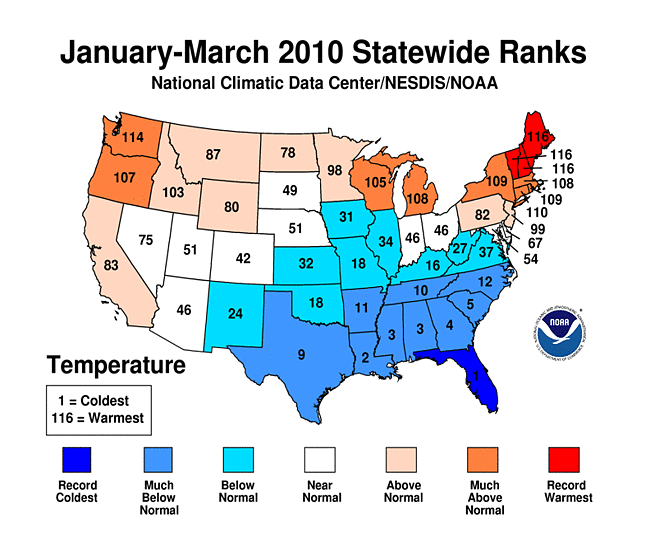


























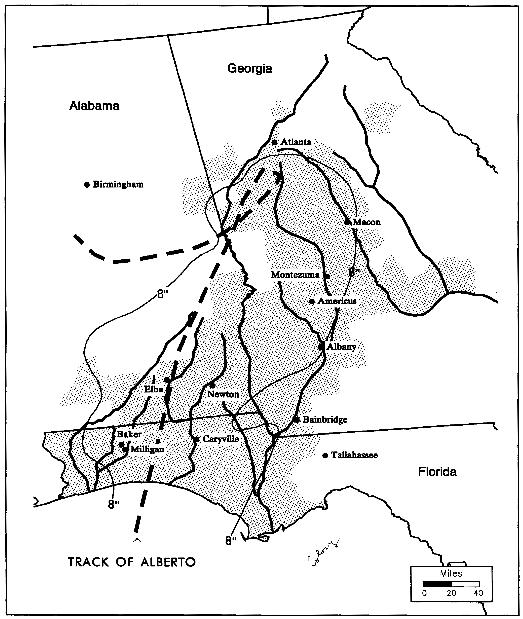

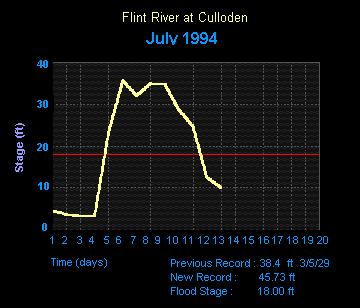


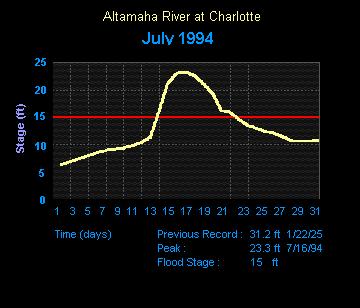


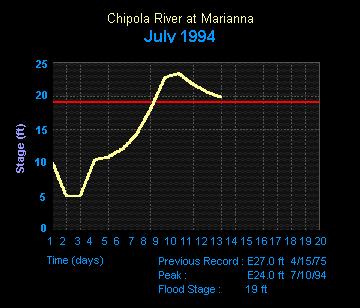

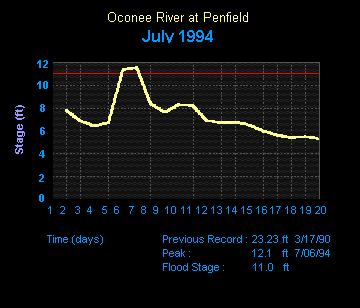










 RSS Feed
RSS Feed
